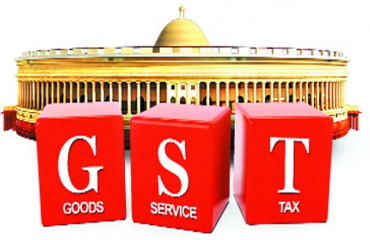
Even before we could get to see the results of the seventh economic census (conducted in 2019-20), plans are afoot to conduct the eighth one in the coming months. India’s economic census is supposed to be a comprehensive database of all firms in the country, including micro-enterprises. It is supposed to be conducted every five years and serve as a sampling frame for informal-sector surveys. These surveys are then used to estimate the informal sector’s contribution to national output.
Even before we could get to see the results of the seventh economic census (conducted in 2019-20), plans are afoot to conduct the eighth one in the coming months. India's economic census is supposed to be a comprehensive database of all firms in the country, including micro-enterprises. It is supposed to be conducted every five years and serve as a sampling frame for informal-sector surveys. These surveys are then used to estimate the informal sector's contribution to national output.
Ever since the first economic census was launched in the mid-70s, there have been recurrent complaints regarding data quality: both from within the statistical establishment and from outside. Since the economic census is conducted jointly by the National Statistical Office (NSO) and state directorates of economics and statistics (DES), the exercise has been marred by coordination, staffing and supervision problems.
Also Read: India must strengthen its statistics for a new era of data-driven governance
When the seventh economic census was being conceived, given the delays in the sixth iteration and doubts over data quality, the National Statistical Commission had recommended that the next one not be conducted till those problems were sorted out. But the NSO went ahead with its plans and deployed staff from the information technology ministry's Common Service Centres (CSC) to conduct the census. The role of state DES was minimized. The results were even more disappointing than earlier, and may not be released.
Given the troubled history of India's economic census, it is worth considering other alternatives to map the spread of enterprises across the country. Some small enterprises that are not part of the GST net are registered under other state laws (such as the Shops and Establishments Act or Co-operative Act). If each enterprise is assigned a unique state ID, it is possible to develop a meta-database of all such enterprises (and their establishments) in a state. This database can then be dynamically updated based on information about the renewal of registrations.
This approach will obviously leave out a vast number of micro-enterprises that are not registered under any Act and may not be inclined to do so. Think of roadside vendors selling bhel puri or pakodas. So we would still need sample surveys to track these micro-enterprises.
Also Read: Plug data gaps: State-level statistical surveys could help
The NSO could take a leaf out of the Registrar General of India's (RGI) playbook. Faced with incomplete registration of births and deaths, the RGI had initiated the Sample Registration System (SRS) in the 1960s to provide reliable estimates of vital statistics in the country.
The RGI draws up a random sample of villages and urban settlements across the country after each census, and continually monitors them for the next decade. Part-time enumerators are hired to track all births and deaths in the selected villages and urban blocks. The data is verified periodically by another team.
A similar approach could help track the activities of micro-enterprises across the country. An Enterprise Sample Registration System (ESRS) could help fill important gaps in our understanding of India's invisible economy. The ESRS approach could help us track the births, deaths and rebirths of micro-enterprises over time. Quinquennial economic censuses or annual surveys of unincorporated enterprises (in new villages or urban blocks each year) will not be able to do so.
Also Read: India's Census needs an urgent update: Vital data mustn't be delayed
Such an ESRS project would be able to capture the economic contribution of even those tiny enterprises that spring up only at a certain time of the year (say, a banta soda seller who sells those bottles only in the summer) or at a certain time of the day (say, a roadside pakoda-seller who sets up her cart only for a few hours every evening). It would help quantify the volatility and dynamism inherent in India's micro-enterprise sector.
As in the case of the SRS project, the ESRS project should be launched only after detailed pilots have been conducted in different parts of the country. If these trials succeed, the ESRS should replace the economic census and the surveys based on it.
What if all enterprises could be brought under the 'formal registration' net? What if every Indian grew fabulously rich, and no one needed to set up micro-enterprises in this country? In such a scenario, the ESRS can be wound up. But that day is unlikely to arrive anytime soon.
Just look at the data from China's latest economic census. The world's manufacturing powerhouse offers regular jobs to millions of Chinese factory workers. Yet, many more workers have to find work in micro- enterprises spread across the country, as the country's 2023 economic census data shows.
Also Read: Mint Quick Edit | Deflation is bad news for China's economy
Even if India were to build large numbers of mega-factories, and even if India were to replace China as the factory of the world, it will still be home to millions of micro-enterprises. If India struggles to meet its manufacturing goals, the number of such tiny enterprises will only be higher.
Rather than wishing them away, Indian policymakers need to study the country's micro-enterprises closely. They should understand their needs and try to respond to them. Reliable and regular data on micro-enterprises would also help investors and analysts who need to track every aspect of the Indian economy. On the whole, we need fresh thinking on how to track our micro- enterprises better.
The author is a Chennai-based journalist.
